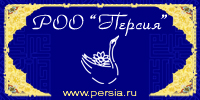Oriental Collection № 4/2011
 Cappadokia, a photo essay by Aleksey Polyakov, opens the last issie of this year.
Cappadokia, a photo essay by Aleksey Polyakov, opens the last issie of this year.
Smita Sengupta. «The World Opens to Me in Colours...» Rabinranath Tagore, the first Nobel laureate from Asia, is known mostly as a poet, prose writer, and dramatist. His saying, which is used as a title for this article, reminds us of the less known side of his talent, namely an uncommon artistic talent. The exhibition in the Oriental Centre of the Russian State Library, which was organised to mark Tagore’s 150th anniversary, featured both books and paintings by this great son of India.
Svetlana Lukashova, Nikolay Lukashov. Under the Waves of Issyk Kul. The lake of Issyk Kul, which is situated at the foot of Tian Shan mountains, keeps many secrets. Underwater archaologists, who work in its deeps, keep discovering the new artifacts related to various tomes and cultures. Nevertheless, there is no serious support yet for the legend, which excites the researchers and tells about the submerged Armenian monastery and the relicts of Matthew the Apostle.
Vladimir Korenyako, Al’bina Legostaeva, Lidiya Shmotikova. Dragon and Phoenix. Dragon and phoenix occupy the most important place in the mythology of East Asia. When depicted together, they symbolise the union of two principles, which underlie the circulation of all natural phenomena. Dragon and Phoneix, such is the name of the exhibition, which is going to be open in February 2012 in the Museum of Oriental Art in Moscow.
Vladimir Datsyshen. For the Sake of Drawing Together the Great Neighbours. One cannot imagine the development of Russian studies in China without textbooks. The Russian Spiritual Mission in China and Russian Sinologists had played a great role in organising the studies of Russian language in China, and in publishing the relevant teaching media.
Svetlana Sysoeva. On the Island of Sumba, the Shadow of Heavenly Boats, the Stone Sarcophagi, and the Eight Pairs of Marapu. The imhabitants of the small island of Sumba in Indonesia keep to their traditional beliefs, build houses with high straw roofs, and construct carved stone sarcophagi for their deceased. The author describes the funeral ceremony of the noble islander, which she witnessed in person.
Konstantin Panchenko. The Land of Dead Towns. The stone wastelands of Northern Syria serve as an example of the history turned backwards. In Byzantine times, here was a flowering land with numerous temples and dwellings, but now this is a barren plateau, which the archaeologists have called ‘The Land of Dead Towns’. In the last half of the 8th century, local Christians ceased to build churches and write books, and the towns were abandoned. The author thinks that one of the main reasons for this backward move of history was an ecological catastrophe, which had hit this vast region.
Andrey Strelkov. The Secret of the Old Treatise. An account of the journey to the distant Raja monastery in Tibet, made by the author, who had to overcome quite a few obstacles. His efforts were rewarded: he had found there the local blockprinted edition of the TIbetan translation of one of the most important treatises of the Kalachakra school.
Andrey Shugaev. Sinners and Saints from the Brim of the Great Erg Oriental. The permanent author of our magazine continues his stories about his collection of the postcards from colonial Maghrib. These postcards helped recreating the way of life of the two less known Berber tribes. One of them supplied prostitute girls to towns, whereas another was renowned for its strict puritan morals.
Nikita Sokolov. The Game as Religion. The Indians learned the game of cricket from the British in the 19th century, and since that it gained new fans year be year, to become the real object of worship. When the Indian team had won the 1983 Cricket World Cup, the game in India ceased to be just an entertainment, it became a symbol of ‘Indianness’, a way of national self-expression, like football in Brazil or rugby in the island states of the Pacific, whereas the cricket players turned into half-gods, the spokesmen of the national aspirations.
Andrey Khrenkov. The Ark of the Covenant: the Last Mooring? The author had collected and analyzed the vast material related to the history of the Byblical Ark of the Covenant, which was built by Moses to keep the Testimonies. The author thinks that the most probable place, where the Ark could be moved from the Jerusalem Temple, is Ethyopia. Although many people outside Ethyopia consider such version quite ironically, not everything in this case is altogether evident, according by the author.
Irina D’yakonova. The ‘Damsels’ of Russian Revolution. A note of the new book by Professor Haruko Saito, a Japanese Historian, entitled Russian Revolution of Damsels.
In this issue we publish a large selection of stories about the presentations of our magazine on the exhibitions in Russia and abroad, as well as of the last meeting of the Oriental Collection Club, held in the Bilbio-Globus bookshop in Moscow.
Our «Orientnet» section is devoted to elephant, one of the most revered animals in India. Please e-mail your wishes, suggestions and comments to the following address: orientnet@rsl.ru. You can find the summaries of the previous issues online, by visiting our section of the Russian State Library Web-site: http://orient.rsl.ru.






